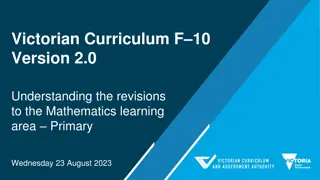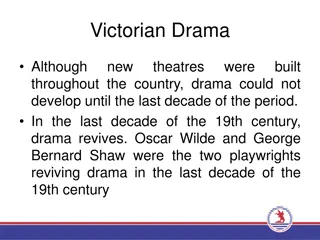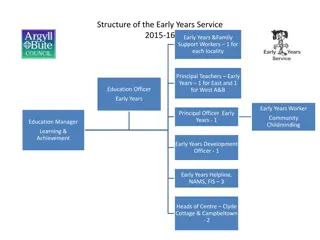Understanding the Victorian Early Years Learning and Development Framework
The Victorian Early Years Learning and Development Framework is a document that outlines what children should learn between birth and eight years old, emphasizing play-based learning, collaboration among early childhood professionals, and the crucial role of families as a child's first teacher. Research supports the importance of the first eight years in a child's life for learning and development, with the framework identifying five key outcomes for children to become confident and happy individuals.
Download Presentation

Please find below an Image/Link to download the presentation.
The content on the website is provided AS IS for your information and personal use only. It may not be sold, licensed, or shared on other websites without obtaining consent from the author. Download presentation by click this link. If you encounter any issues during the download, it is possible that the publisher has removed the file from their server.
E N D
Presentation Transcript
Victorian Early Years Learning and Development Framework Information for families
What is the Victorian Early Years Learning and Development Framework? A document which describes what children should learn between the age of birth and eight years Outlines how early childhood professionals work together, and with families, to support children s learning.
What is it all about? The Framework aims to highlight the importance of: Play-based learning Professionals talking to each other Recognising that all children learn in different ways and at different rates and times Families as their child's first teacher. Families understand their children better than anyone else.
Why is there an Early Years Learning and Development Framework? Research tells us: The first eight years of a child s life is when they do their most important learning This time should be full of play and opportunities to explore the world around them From birth, learning and development at each stage of life forms the building blocks for the next.
What does it say about learning? The Framework identifies five learning and development outcomes for all children from birth to eight years. These outcomes have a broad view of the kind of knowledge and skills all children need for them to become confident and happy through their life.
Outcome 1 Children have a strong sense of identity Having a strong sense of identity means that children can: build secure relationships with friends, family and other people in their lives interact with others in a constructive and respectful way reach out and communicate their needs for comfort and assistance
Outcome 2 Children are connected with and contribute to their world Being connected with and contributing to the world means that children can: explore their world by making new friends learn about fairness and how to live independently and with other people understand the natural environment
Outcome 3 Children have a strong sense of wellbeing Having a strong sense of wellbeing means that children: have good mental and physical health are confident understand the benefits of strong social, emotional and spiritual wellbeing
Outcome 4 Children are confident and involved learners Being a confident and involved learner means that children: Enjoy learning Are curious, confident and creative Show persistence to keep trying Use their imagination to solve problems Can use technologies to find new information
Outcome 5 Children are effective communicators Being an effective communicator means that children: Interact verbally and non-verbally with other people Enjoy reading and being read to Enjoy singing, talking, counting and rhyming Can see patterns in numbers and shapes
How early childhood professionals will support your child s learning Early childhood professionals will: Discuss your child s learning with you Ask advice from other professionals if they are concerned about your child s learning Respect your family s values, beliefs and decisions Recognise that all children can learn, but some children require additional help to learn Use the most effective teaching strategies to support your child to learn
What can I do to support my childs learning at home? Families are the most important people in supporting children s learning and development. You can support your child s learning at home by: Reading to them Encouraging them to ask questions Playing singing and rhyming games Encouraging their attempts at new things Encouraging them to be involved in household activities Encouraging them to talk and interact with others
What else can I do to support my childs learning? There s also a range of services you can access which have early childhood programs including: Local libraries Museums Local parks Maternal and child health service Playgroup Kindergarten and long day care Sporting organisations Specialist children s services If you have concerns about your child s learning, you can talk to your early childhood educator or your maternal and child health nurse who can provide you with advice or a referral.
What can I do to support my childs transition to school? If your child is beginning school, work with your child s educator to complete a Transition Learning and Development Statement, for your child. This helps your child s future teacher to get to know your child and plan their learning. http://www.education.vic.gov.au/childhood/parents/transition
Where can I get further information? Helpful newsletters, websites, and telephone services on a range of topics related to children s learning and development can be found at: http://www.education.vic.gov.au/childhood/parents/health/ Pages/newsletters.aspx























